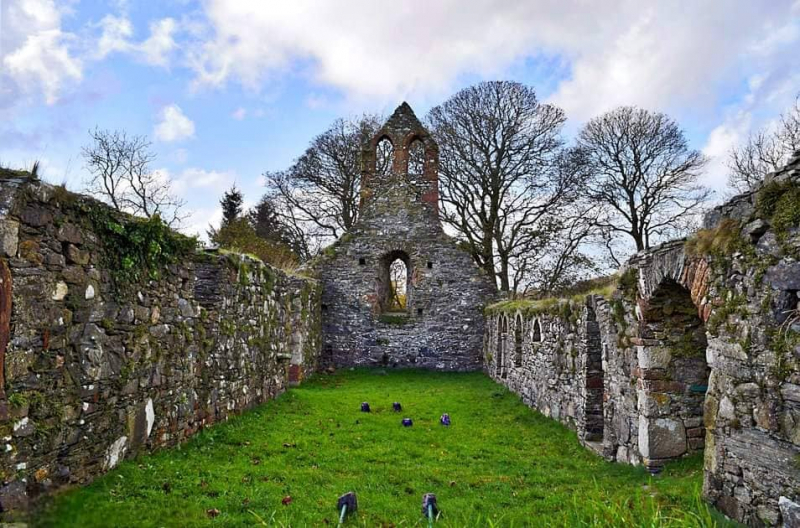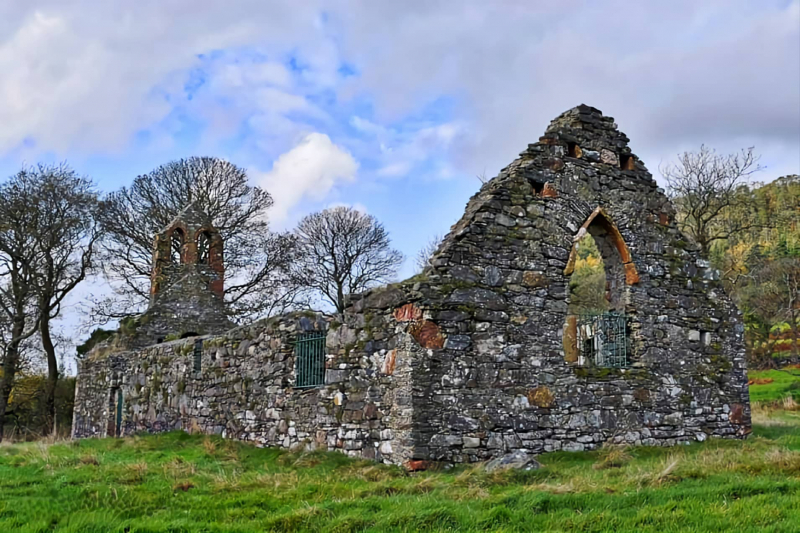St Trinian's Church
St Trinian's Church is the roofless ruin of a small chapel at the foot of Mount Greeba, adjacent to the main A1 Douglas - Peel road in the parish of Marown, Isle of Man. Referred to in Manx as "Keeil Brisht" (broken church), the church is the source of an ancient Manx folk tale involving Buggane, a giant mythical elf that lives on Mount Greeba, and humans swore that the church should never be completed.
According to legend, the church was built to fulfill a shipwrecked person's oath. It was originally named after Ninian, a 4th-century Scottish saint, but the name was eventually changed to Trinian. The ruins of a 14th-century church on an earlier site, as demonstrated by the 7th-century cross on the grave in front of the ruins of the altar, are known as St Trinian's. The cross could indicate the location of the founder's shrine, which was supposed to be the original Manx Keeil.
St Trinian's Church became a favorite place for Sunday School picnics in the late 19th and early 20th centuries. On September 4, 1911, the holy liturgy was held at St Trinian's for the first time in hundreds of years. According to recent reports, a great number of individuals gathered, far more than the chapel could allow. The Bishop of Sodor and Man, as well as the Central Governor of the Isle of Man, Lord Raglan, who presented the lesson, and Pastor Clarke, who read the prayer, all participated in the celebration. Lady Raglan was also present, and the Crosby Brass band performed. As a result, the church was used for worship on other occasions. St Trinian's was used as one of the filming sites for The Manxman, a film based on Hall Caine's novel, in September 1916. Caine was a resident of Greeba Castle, which was close to St Trinian's. St Trinian's Church deserves to be on the list of most beautiful historical sites in Isle of Man.
Location: Peel Rd, Crosby











